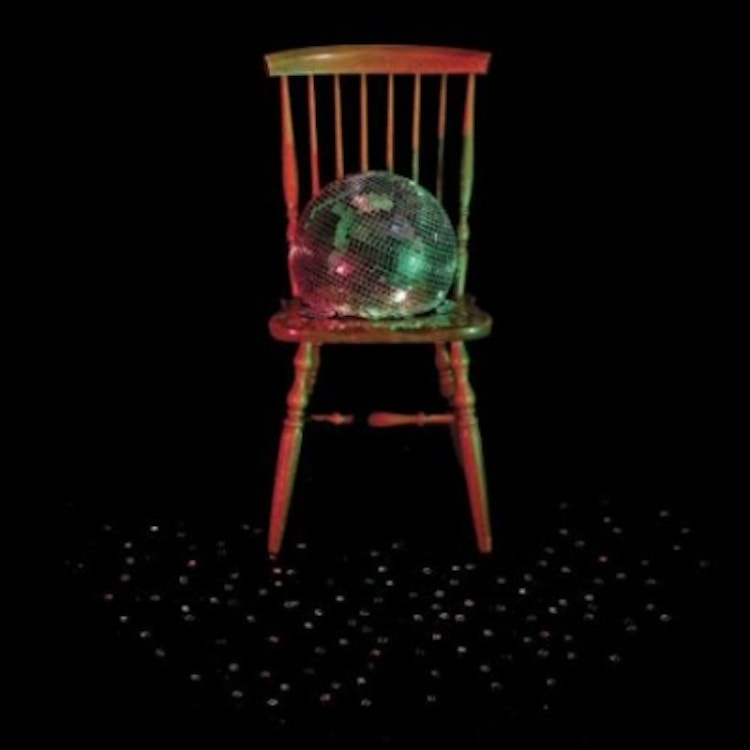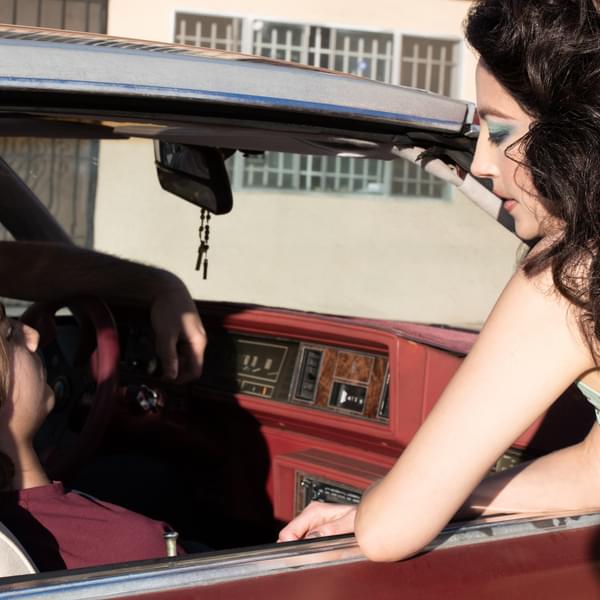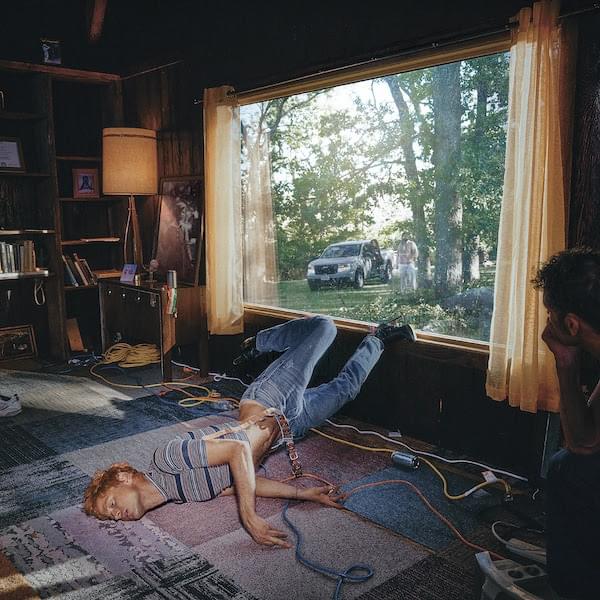"The Visitor"

03 September 2009, 10:00
| Written by Matt Poacher
(Albums)
 ‘Nothing makes me want to disappear as when someone opens their mouth’So there you are ”“ you wait 8 years for a new Jim O’Rourke solo album, and when it arrives it’s a single 38-minute song, a symphonic sweeping thing that references damn near 80 years of music, is built from 200 tracks and what must be close to 40 instruments (all played by the man himself), and hangs together with such grace and delicacy you have to simply give in to it. Even if there is a touch of the ineffable about it”¦So where has O’Rourke been exactly? Well he hasn’t been a workshy fop, of course ”“ there have been numerous releases since Insignificance: ample drone workouts and experimental pieces, numerous collaborations (Loose Fur, Fenn O’Berg amongst others) and a slew of film work with the likes of Werner Herzog. (And yes, that was O’Rourke looking sheepish in the School of Rock outtakes ”“ he was the music advisor). He also famously decamped to Japan in 2006, where he studies Japanese and watches movies, apparently. And of course pieces together minor miracles of neo-classical pop music.There’s been much made of the fact that this is the fourth album of a quadrilogy ”“ a cycle named after Nic Roeg films started by Bad Timing back in 1997 and moving through Eureka and Insignificance. By rights The Visitor should have been called Castaway then, instead this seems to be a sly reference to another Roeg film ”“ The Man Who Fell to Earth. So why the change in tack? I wonder if O’Rourke ditched the Castaway title precisely because it was too suggestive and over-coded, too indicative of his current status as an émigré in Japan and to what the content of this opaque, and at times unknowable piece of work might mean? Is this further retreat inward? He ”“ and his work - has always been the very model of enigmatic, and you often hear a kind of weary ‘oh, he’s just a post-modernist, all style and no substance’ reaction to his work, maybe it’s a response to that. Maybe. Whatever the reason, you get the impression this is a life’s work, a summation of something. It means a good deal.And after all that waffly bollocks what does it sound like? The 200 tracks mentioned above should give you some idea. The scope of The Visitor is quite extraordinary ”“ both in its execution and its ambition. It’s a voyage out and a self-referencing song cycle, a meticulously pieced together summation of everything O’Rourke has attempted to date. During its 38 minutes, through the use of everything from an oboe, and a piano to a Hammond organ and a flute (and of course his signature Takoma-inspired guitar playing) it references Gershwin, John Fahey, Todd Rundgren, Van Dyke Parks, Steely Dan, Bill Evans ”“ and there must be a whole lot more I’m missing. There is so much packed in here ”“ horizontally and vertically ”“ that you’re as much controlled by an inner-orienting ear as much as your external lugholes, searching the intricate nature of the recording like it were a piece of baroque architecture. As such, talking of individual moments is kind if self-defeating as there are so many recurring motifs and oblique moments of self-reference that gradually reveal themselves, but particular moments do present themselves: the first time the tinkling glass-like piano motif appears around the 16-minute mark; a section of 5/4 wobble led by an Oboe and banjo that sounds like a weirdly Appalachian Steely Dan; the later descending piano figure that seems a direct reference backwards to Bad Timing”¦All of which returns us to the central dilemma of The Visitor and O’Rourke in general ”“ that sense of the ineffable. Is the album a pretty bagatelle, the shiny glitter ball of the cover, all reflective surface? Or is there a meaningful core to all this, a lasting body of work that will ultimately rank up there with the best? Or both? I suspect this dance is an elementary part of the puzzle of O’Rourke, and whilst we’re tripping over our awkward feet he’s quietly laughing, safe in the knowledge that he’s made the album of his life.
‘Nothing makes me want to disappear as when someone opens their mouth’So there you are ”“ you wait 8 years for a new Jim O’Rourke solo album, and when it arrives it’s a single 38-minute song, a symphonic sweeping thing that references damn near 80 years of music, is built from 200 tracks and what must be close to 40 instruments (all played by the man himself), and hangs together with such grace and delicacy you have to simply give in to it. Even if there is a touch of the ineffable about it”¦So where has O’Rourke been exactly? Well he hasn’t been a workshy fop, of course ”“ there have been numerous releases since Insignificance: ample drone workouts and experimental pieces, numerous collaborations (Loose Fur, Fenn O’Berg amongst others) and a slew of film work with the likes of Werner Herzog. (And yes, that was O’Rourke looking sheepish in the School of Rock outtakes ”“ he was the music advisor). He also famously decamped to Japan in 2006, where he studies Japanese and watches movies, apparently. And of course pieces together minor miracles of neo-classical pop music.There’s been much made of the fact that this is the fourth album of a quadrilogy ”“ a cycle named after Nic Roeg films started by Bad Timing back in 1997 and moving through Eureka and Insignificance. By rights The Visitor should have been called Castaway then, instead this seems to be a sly reference to another Roeg film ”“ The Man Who Fell to Earth. So why the change in tack? I wonder if O’Rourke ditched the Castaway title precisely because it was too suggestive and over-coded, too indicative of his current status as an émigré in Japan and to what the content of this opaque, and at times unknowable piece of work might mean? Is this further retreat inward? He ”“ and his work - has always been the very model of enigmatic, and you often hear a kind of weary ‘oh, he’s just a post-modernist, all style and no substance’ reaction to his work, maybe it’s a response to that. Maybe. Whatever the reason, you get the impression this is a life’s work, a summation of something. It means a good deal.And after all that waffly bollocks what does it sound like? The 200 tracks mentioned above should give you some idea. The scope of The Visitor is quite extraordinary ”“ both in its execution and its ambition. It’s a voyage out and a self-referencing song cycle, a meticulously pieced together summation of everything O’Rourke has attempted to date. During its 38 minutes, through the use of everything from an oboe, and a piano to a Hammond organ and a flute (and of course his signature Takoma-inspired guitar playing) it references Gershwin, John Fahey, Todd Rundgren, Van Dyke Parks, Steely Dan, Bill Evans ”“ and there must be a whole lot more I’m missing. There is so much packed in here ”“ horizontally and vertically ”“ that you’re as much controlled by an inner-orienting ear as much as your external lugholes, searching the intricate nature of the recording like it were a piece of baroque architecture. As such, talking of individual moments is kind if self-defeating as there are so many recurring motifs and oblique moments of self-reference that gradually reveal themselves, but particular moments do present themselves: the first time the tinkling glass-like piano motif appears around the 16-minute mark; a section of 5/4 wobble led by an Oboe and banjo that sounds like a weirdly Appalachian Steely Dan; the later descending piano figure that seems a direct reference backwards to Bad Timing”¦All of which returns us to the central dilemma of The Visitor and O’Rourke in general ”“ that sense of the ineffable. Is the album a pretty bagatelle, the shiny glitter ball of the cover, all reflective surface? Or is there a meaningful core to all this, a lasting body of work that will ultimately rank up there with the best? Or both? I suspect this dance is an elementary part of the puzzle of O’Rourke, and whilst we’re tripping over our awkward feet he’s quietly laughing, safe in the knowledge that he’s made the album of his life.
Get the Best Fit take on the week in music direct to your inbox every Friday
Read next
Listen
Flavours' "Ground Up" is an intoxicatingly groovy bouquet
Bedridden’s "Philadelphia Got Me Through" feels like stepping into a mosh pit of angry gymnasts
Burgeoning indie-pop group late night drive home explore the dangers of the internet in “terabyte”
Escapist alt-pop auteur Erin LeCount presents her latest labyrinthine track "Marble Arch"
Waiting for Smith's "I Like Life" is a sun-soaked gambol
Sink into a blistering shoegaze soundscape with green star’s latest track “four-o-five”
Reviews

Great Grandpa
Patience, Moonbeam
26 Mar 2025

Deafheaven
Lonely People With Power
26 Mar 2025

Perfume Genius
Glory
26 Mar 2025

IDER
Late to the World
18 Mar 2025




